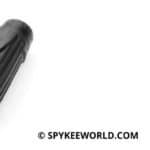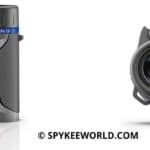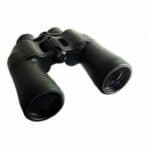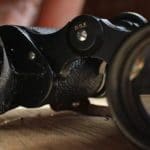Binoculars are very useful equipment that can be used for hunting, surveillance, sporting events, etc. It can be used to sport large distances with brief detailing. So to take the benefit of this incredible device let us learn how do binoculars work.
This Are of the best binoculars that we have reviewed:
How Do Binoculars Work?
Binoculars are just a set of two telescopes that are combined by a movable joint in the center. This hinge helps the eyepiece to fit perfectly on our face. Binoculars contain two types of lenses – an objective lens and an eyepiece lens. The objective lens takes the light through the lens and simply capture the image. The eyepiece lens magnifies the captured image and makes it more define for our eyes.
Now to understand the working of binoculars let us study its parts briefly one by one.
- Refraction: Refraction is the phenomena in which the light bends around the corner of any object, in this case, the object is the lens. Manufacturer of binoculars alternate the size and curve of the objective lens to control the amount of light that is entering through the binoculars.
- Lenses: While understanding working of binoculars you must understand lens. Objective lens in our binoculars is a type of convex lens. A Convex lens is thicker in the middle as compared to sides, therefore light bends towards the middle direction of the lens as it passes through the lens. An objective lens captures the distant object and gives us the small image of our focused object. Eyepiece kind of work as the magnifying lens. It magnifies the image which is obtained from the objective lens for our pleasure.
- Prisms: There is one side effect of using the objective lens in binoculars. As the objective lens is convex, it bends all the rays of lights towards the center of the lens and as a result, sometimes rays get intersects. This crossing of rays results in the inverted image of the object. To fix this inverted image prisms are used. One prism rotates the image 90 degrees therefore to rotate one image completely 2 prisms are used and in total 4 prisms per binocular. Please note that the eyepiece lens cannot fix this issue of an inverted image.
- Focus or Diopters: You may notice the big central ring on both the sides of binocular. This ring helps to focus on an object instantly without putting us in lots of work. This ring provides us a more focused and clear image. Some binocular have diopters for this job. Diopters cancel the difference between your eyes and focus on the object from both the sides individually. As a result, it gives a more focused and clear image.
- Field Of View or View Area: Field of view is defined as the total area of the view which we are capturing. It is generally measured in 1000 yards. Higher magnification is simply the result of less view of the field and vice-versa.
- Eye Relief: The distance between the eyes and eyepiece is called eye relief. Most people touch their eyes with eyepiece but this arrangement restricts the area of your view. To see the full area of the view it is advised to keep a short distance between your eyepiece and your eyes. People with eye-glasses should keep the minimum distance of 11 millimeters of eye relief. Some binoculars come with adjustable eyepieces to alter the eye relief.
- Exit Pupil: Exit pupil defines as the width of the light entering through the eyepiece. A large exit pupil is considered as more suitable. For night view large exit pupil is the best option as it allows us to enter much light and help us to get a brighter image. Exit pupil can be calculated by dividing an objective lens by a magnification lens.
How To Use Binoculars Properly?
In addition to how the binoculars work, you can learn more about it by understanding how to use it properly.
1. Adjusting The Position Of Barrels And Eyecups
- Adjusting the distance between binoculars: Place a firm hand on both the barrels and rotate them towards the inward direction to decrease the direction between them. Similarly, rotate them towards the outward direction to increase the distance between them. Keep rotating the barrels until you get a clear circle. If you notice black edges around the circle that is because the barrels are too far from each other, therefore to decrease the distance move both the barrels towards inward. Barrels contain each eyepiece with a prism and an objective lens at the end. If you notice IPD (Interpupillary Distance) then notice the scale and note down the value for future reference.
- Settings for a wider field of view: If you want to see the large view or object at the corner of your object then you need to do some settings which are discussed in this step. Fully drawback your eyecups downward. Make sure to draw the eyecups as far as possible from the barrels, therefore also rotate the barrels in the outward direction. This setting is best for people with deep eyes and also who wear glasses as the eyecups rest just on your brows. Make sure to get rid of any dust and sand.
- Setting for a more focused view: To gain more focus on any specific object on the view you need to fully extend the eyecups. Due to fully extend eyecups your eyes get closer to the optic lens which as a result block peripheral light and also help to protect from dust. Pull them away as far as possible from the barrels. However, this process limits the area of view. Therefore, it is recommended to focus on the centerpieces of the view. For people who don’t wear glasses, it is recommended to use an extended version for better results. Look out for extended eyecups in foggy weather.
- Setting for a more flexible view: If you are going on a trip and need to click lots of different views with different angles then middle eyecups position is proved to be an ideal setting. Press and pull the eyecups until they reach the middle position of fully extended and fully retracted. After setting make sure to block all the peripheral light to get a more focused view. Also, protect the ocular lens from dust and dirt.
2. Setting Diopters
- Adjust diopters on your binocular: Diopters are defines as the power of magnifying the view. Diopters are generally placed on a specific lens of binocular which helps to clear the view when seen from one eye only. The scale of diopters varies from a negative value to a positive value. Diopters are mostly placed on the right-side lens and other times it is placed on the left side.
- Focusing on the non-diopter side: find an object with a brief detailing at some far distance. Once you find an object then stop, now cover your lens with diopter setting. Diopter settings include lens cover or you can also use your hand. Rotate the center focus wheel until the image gets more clear and focused. Please don’t change diopters settings yet.
- Focusing on the other side: Remove your lens cover or your hand from the lens and place it on the other lens. Once again focus on the object with your other eye through the diopter lens. Start adjusting diopter settings until you get a clear, sharp, and detailed image of the object. Test with your other eye to check the clearance and sharpness of the object. Once the object seems clear from both the eyes you are good to go. Note down the final value on the diopter scale for future references. Don’t adjust the center focus wheel in this step. Just make sure that your binoculars are clean.
- Testing clarity: After adjusting the position of your central focus wheel and diopter gauge you can see a clear image of the object with both your eyes. Still, if you notice any blur then repeat the same procedure as given above followed by adjusting the setting of central focus wheel and diopter gauge. Your final view should be in 3-D. If not then adjust the setting accordingly. If you feel any strain in your eyes while using binocular then maybe your binocular is out of alignment, for such case please contact the manufacturing department.
3. Learning Techniques
- Practicing on distant objects: For beginners, you should start focusing on distant objects for example trees, building, still birds, etc. Focus with your eyes on your distant object now without removing your eyes from the object bring your binocular to your eyes and make some adjustments until you get a clear image. After you become good with still distant objects start practicing on moving animals or objects. For this, you are advised to take the surrounding of the object as your point of reference.
- Targeting animals with naked eyes: Most people bring the binoculars to their eyes the moment they spot their target. Avoid doing this, make sure to wait for a few seconds, and focus on your target with only your naked eyes. Study the surrounding of your target as well and all it’s back and forth motion. Scan the other company of your target too if its there.
- Scanning for open area: If you want to target an object in an open area then you are advised to target an object at distant. Search for the edges as mainly the object lies in the edges of open filed for example-birds, squirrel, rabbits, etc. If you are searching for an object in the sky then you should search for any distant tree, now move the binocular on top of the tree and move in the right and left direction in a horizontal plane in search of an object.
Final Thoughts
We have tried to explain to you how do binoculars work in brief. Binoculars are the multipurpose tool that can give you great satisfaction if used properly. Follow all the above steps carefully and get the best result. If you pursue a hobby of hunting, photography, spotting event, etc, then binocular is the best equipment for you.





Leave a Reply